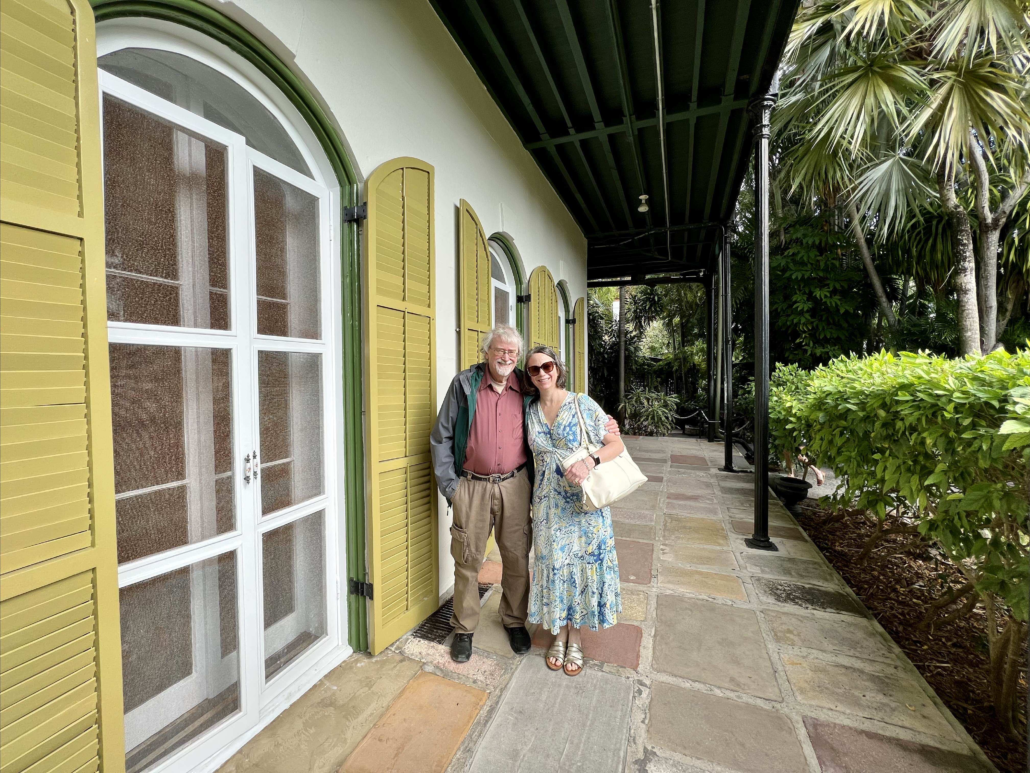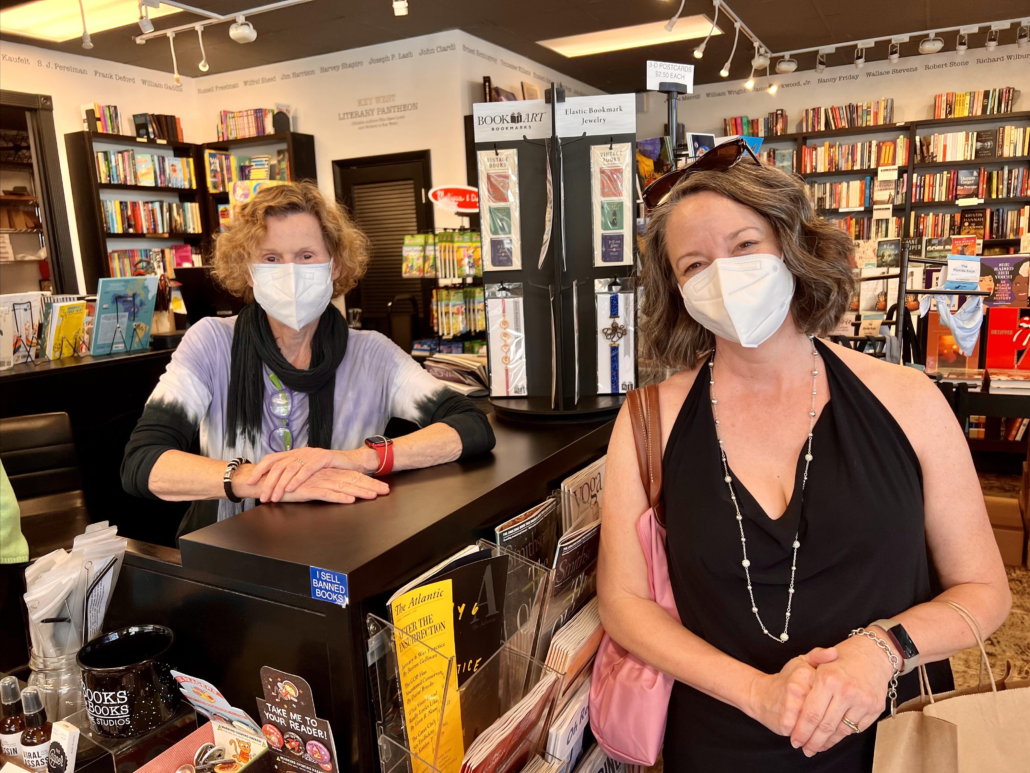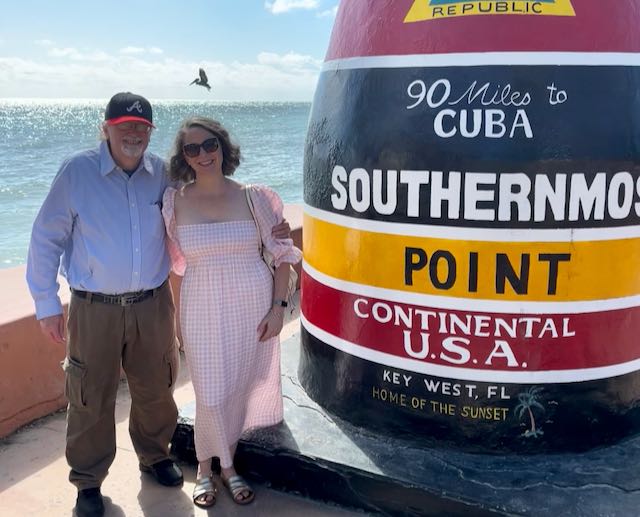If you visit Key West, Florida—the southernmost city in the continental United States—and stroll down Duval Street in the city’s historic district, you’ll pass numerous T-shirt shops, a glance at which will likely convince you that the city is geared only toward the entertainment of drooling Neanderthals. But don’t despair and don’t stop there. We visited Key West this past January, and found that if you get away from touristy souvenir shops, it turns out Key West is a kind of Mecca for literary tourists.
Best Place To Order Tramadol Online First, of course, just about everybody knows that Ernest Hemingway was a resident of Key West, and that you can visit his house here. If you’re a fan of Papa, the Monarch of Macho, this house is a must-see. Hemingway first came to Key West in 1928 with his new second wife, Pauline Pfeiffer, loved the place and found he loved deep sea fishing. Pauline’s rich Uncle Gus bought the couple the fading mansion that became their home (at 907 Whitehead Street), and helped them restore the 1851 Spanish Colonial home to its historic splendor. Hemingway finished A Farewell to Arms in Key West, and went on the write Death in the Afternoon, The Green Hills of Africa, and To Have and Have Not (featuring a guy who captains a deep sea fishing boat based in Key West!) between 1931 and 1939, the years he lived in this house.
The house has a number of furnishings dating to Hemingway’s time, including his old typewriter you can see in his writing den. The grounds are also full of cats, many with six toes that may be descended from Hemingway’s own famous six-toed cat, Snow White. The grounds also contain the swimming pool, installed by Pauline (probably with Uncle Gus’s money) while Ernest was in Spain having an affair with Martha Gellhorn (his third wife-in-waiting). Pauline knew that the $20,000 cost of the pool in the midst of the Great Depression would set Ernest’s blood to boil, but it was a good way of getting back at him for the affair. Apparently he was so upset that he took a penny out of his pocket and threw it at her, saying “Here! Take my last penny!” Pauline had the penny cemented into the flagstone around the pool, where you can still see it today. Ernest and Pauline divorced in 1940, but Pauline continued to live in the house until her death in 1951.
The house and museum are open 9 a.m. to 5 p.m. 365 days a year. The cost is $17 for general admission (and oddly enough, they only take cash), and that includes a 20- to 30-minute optional guided tour, which I’d advise you to take.

Most people don’t realize that Key West was also home to one of Twentieth-Century America’s most important dramatists, Tennessee Williams. Unlike Papa Hemingway, Williams was truly a long-time resident of the city. He first visited in 1941 and purportedly completed the final draft of Streetcar Named Desire in 1947 while staying here at the La Concha Hotel, and he moved to Key West for good in 1949. In 1950 he bought a house at 1431 Duncan Street, which he called his “Tom Thumb cottage.” He won Pulitzer Prizes for Streetcar and for Cat on a Hot Tin Roof while living here, and he also oversaw the filming of his Tony-Award winning play, The Rose Tattoo, here in Key West in the early 1950s. Here he lived happily with his partner Frank Merlo until Merlo’s untimely death in 1963. But he continued to live in the Duncan Street house until his own death in 1983. That house is now in private hands, but there is a small museum on Truman Avenue that displays a large collection of Williams artifacts and memorabilia, including his typewriter, videos of TV appearances, playbills and film posters, photographs, published plays, clippings from newspapers and magazines, and, particularly interesting, original paintings that Williams presented as “thank yous” to people who’d had him to dinner. He called them his “hostess paintings.” The small museum is open Thursday through Sunday from 10 a.m. to 5 p.m. General admission is $7 per person. It’s probably worth it if you are a Williams fan. Might be a little stiff if you’re indifferent. I liked it. My wife went through the exhibits faster than I did, and was recruited to take a group photo of a writing group meeting in the garden while she waited for me to finish reading the placards.
And then came our biggest surprise: My wife got a Facebook message from a friend of outs that her favorite juvenile author, Judy Blume, had her own independent non-profit bookstore at 533 Eaton street in Key West. Blume and her husband, George Cooper, wanted a full-service bookstore in Key West, and designed the space to be a community center for readers and writers.
We found the store, and when we walked in were gobsmacked to see that Judy Blume herself was working behind the counter—easily recognizable even behind her COVID mask. Amazingly personable, the venerable author happily chatted with us as she signed the copies of her books we purchased for friends and family. My wife was somewhere in the stratosphere as she had her picture taken with her childhood idol.

Key West has other sites of literary significance. You can see Shel Silverstein’s “Giving Tree,” which fell and destroyed his house at 618 William Street. Elizabeth Bishop’s house has been purchased and is under restoration at 624 White Street, though it couldn’t be toured yet while we were there. There is, or was, also the Key West Heritage House Museum and Robert Frost Cottage, which was located at 410 Caroline Street, but which closed in 2010. So there’s a lot of literary heritage in Key West. If you’re in the neighborhood, visit these places before another one closes.

